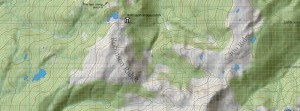Measure Twice: Silent but deadly: new building code requirements aim to lower radon exposure
Radon gas is the vehicle that allows radioactivity to enter your home. It is colourless, odorless and tasteless and can be found everywhere in Canada, including northern BC. According to Health Canada, it is the second-leading cause of lung cancer. Fortunately, its effects are easily mitigated.
Uranimum breaks down in radium and then radon gas. Uranium occurs naturall in some rock tyles. During the ice ages over the past million years glacier ice reoded uranium-bearing rock and spread the ground-up and pulverized rock widely by ice and melt-water transport.
If micro-atomic explosions weren’t bad enough, combined with radiation the exposure to this ongoing barrage can cause significant lung damage. Polonium and lead stick to almost any surface or adjacent particles such as airborne dust and building interiors. When we breathe these particles, the damage can hit us in one of our most vulnerable spots: our lungs.
A 2012 study by Health Canada estimates that 3,200 people die each year from radon-caused lung cancer. This accounts for 16 percent of all lung cancer cases, putting radon second only to smoking. The organization recommends conducting a three-month radon test in your home, preferably during heating season when indoor concentrations are higher due to frozen ground moisture preventing radon from naturally dissipating into the atmosphere. Homes with exposed soil in closed crawlspaces can be at higher risk, although radon levels are not predictable because they depend on mineral composition under the building.
In BC, building code updates came into effect in December that aim to reduce radon gas in homes constructed in 2015 and beyond. They require concrete slabs in basements and crawlspaces be properly ventilated to the exterior with PVC pipe—this is good news, since it is relatively inexpensive to install at the time of construction. The current Canadian guideline for radon in indoor air is to remain below 200 Becquerels per cubic metre (200 Bq/m3), with a Becquerel meaning one radioactive disintegration per second. However, there is no actual safe level; in this case less truly is more.
When drilling for water on my Smithers property, I learned that my home is located on 90 feet of clay, and the seasonal radon levels are highest on the lowest level of our home, ranging from 30 to 75 Becquerels. The highest radon readings were present when there was no air movement, at 4 a.m. each morning. This is one of the advantages of using a continuous indoor radon monitor. I speculate that if my home had the radon protection now required for new homes, that the radon levels would be close to zero.
For more information, visit the Health Canada or BC Lung Association (www.radonaware.ca) websites. The latter allows you to order a radon test kit for about $30 that includes laboratory fees. The average costs for mitigating a home with elevated radon levels is between $500 and $5,000—a small price to pay for your health.



